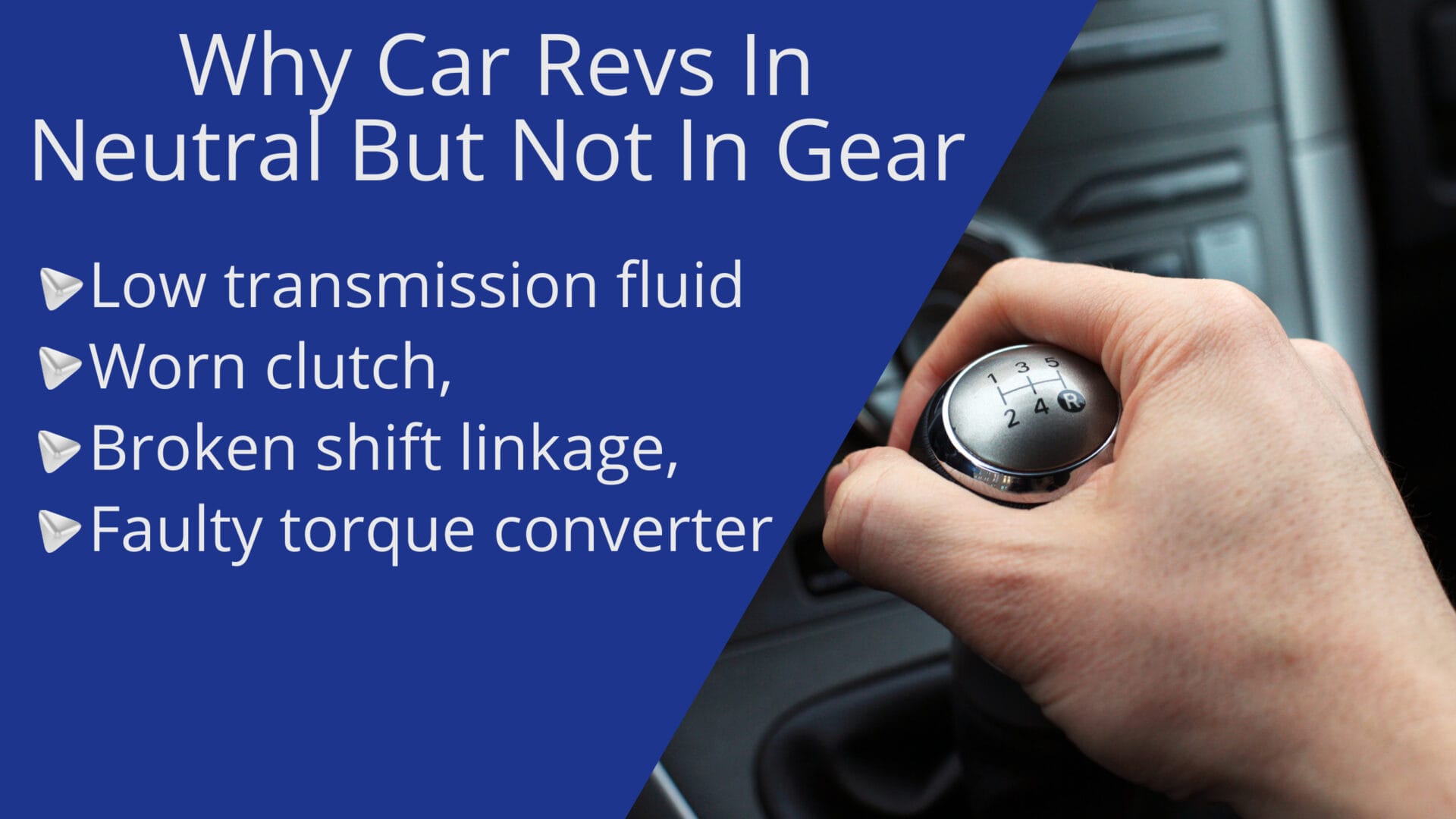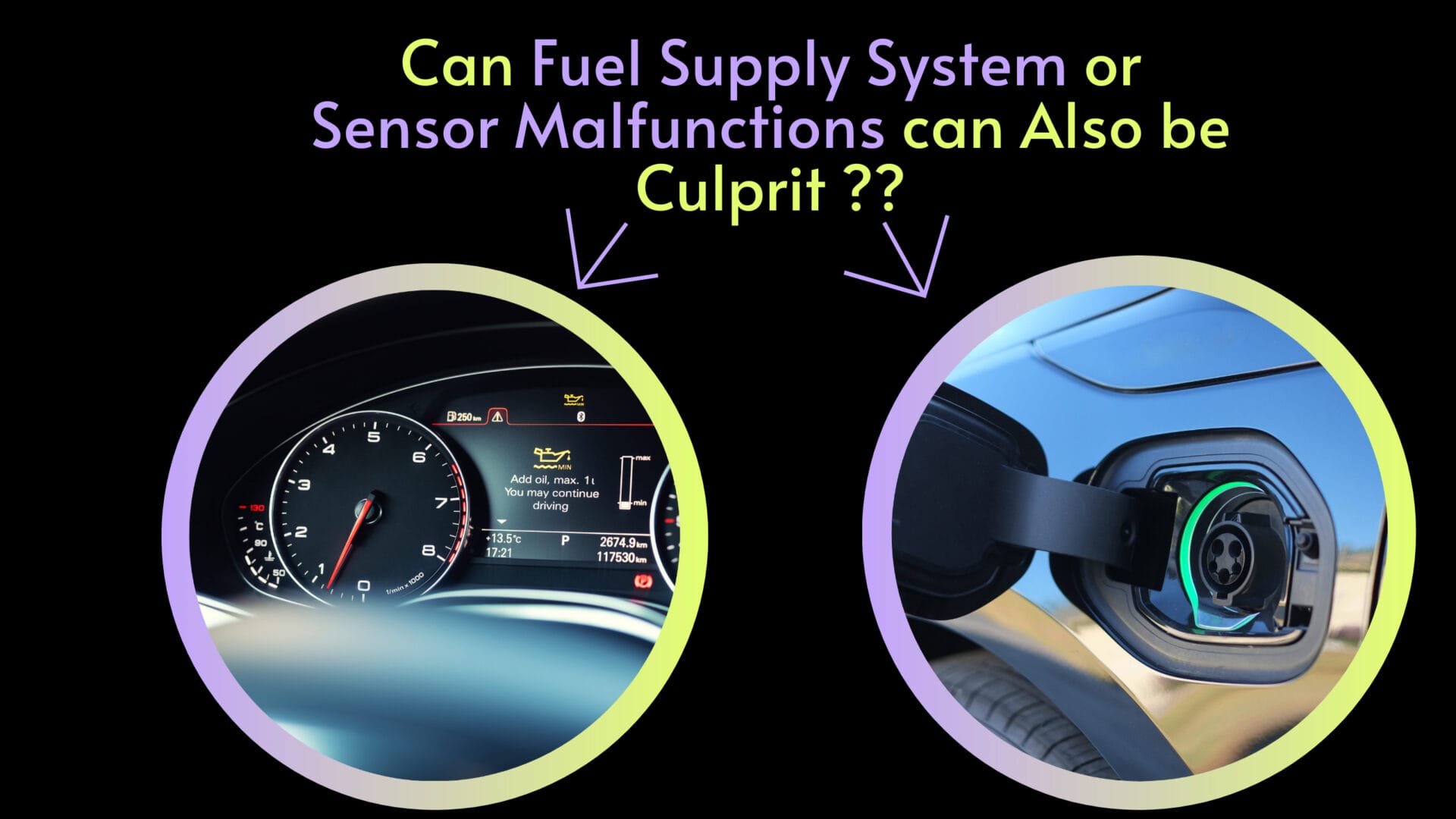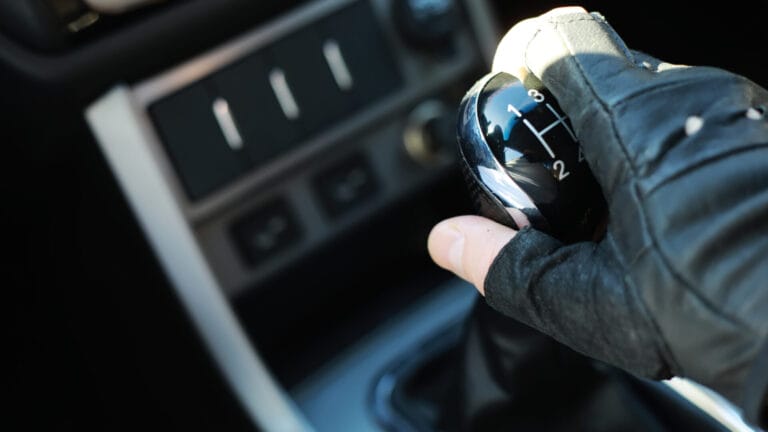Car Revs In Neutral But Not In Gear: What It Means & Causes
Revving your engine or increasing its revolutions per minute (RPM) can help warm your car quickly during cold weather. It is equally important, especially when shifting gears in a manual transmission. Now, besides revving in neutral and park, your car should rev in drive and reverse gears.
So then, what does it mean when a car revs in neutral but not in gear?
In most cases, it means the transmission has potential problems. These issues can range from low transmission fluid to a worn clutch, broken shift linkage, and a faulty torque converter. Sometimes, sensor malfunctions and fuel supply issues can cause the problem.

But how do you diagnose these problems? Read on to find out this and much more.
What Does It Mean When Car Revs in Neutral But Not in Gear?
If your car revs in neutral but not in drive or reverse gears, it means the transmission is experiencing several issues. Below, we will discuss the specific problems.

Low or Degraded Transmission Fluid
Transmission fluid is responsible for lubricating various transmission parts, including the gears.
When the fluid is low, it cannot create the necessary hydraulic pressure the gears need to engage. Similarly, contaminated fluid cannot provide adequate lubrication and hydraulic pressure. Consequently, this can cause the car to rev only in neutral but not in gears.
Diagnosing and Fixing the Issue
If you want to determine the level and state of your vehicle’s transmission fluid, here is how to go about it:
- Step 1: Start your car and drive it for 5 to 10 minutes.
- Step 2: Park the vehicle on an even surface and engage the parking brake.
- Step 3: Locate the transmission dipstick under the hood and pull it out.
- Step 4: Check the fluid’s color to confirm it is not degraded. Generally, dirty fluid is nearly black or dark brown.
- Step 5: Wipe the fluid off the dipstick using a clean rag and insert it back.
- Step 6: Pull it out again to check the fluid’s level. If it is not within the minimum (MIN) and maximum (MAX) marks, it is low.
In the case of degraded fluid, you must flush the transmission and add fresh, clean fluid. And if the fluid level is low, top it up to the full mark.
Clutch Issues
If your car has a manual gear transmission, a worn clutch disk, or a misaligned clutch, it can be challenging to rev in gear. This happens when the clutch disk cannot engage with the flywheel and pressure plate, causing it to slip.
And once the clutch slips, the transmission does not get full power from the engine. This can make it challenging to increase the engine’s RPMs in gear.
Diagnosing and Fixing the Issue
You can tell that you have a bad clutch disk or misaligned clutch if you experience clutch slippage. Other symptoms include vibrations when engaging the clutch, a burning smell, and difficulty shifting gears.
Generally, diagnosing clutch issues can be a complex job that should be done by a qualified mechanic.
If the clutch disk is severely worn or damaged, the mechanic will recommend a replacement. If the clutch is out of alignment, you can align it using a clutch adjustment tool.
To replace the clutch disk, follow these steps:
- Step 1: Raise the front part of your car using jack stands.
- Step 2: Disconnect the negative battery terminal.
- Step 3: Remove the transaxle to get to the clutch by unhooking the clutch cable and positive battery terminals. Also, disconnect all electrical connections and the starter motor.
- Step 4: Unscrew the bolts that mount the pressure plate in place and slide out the clutch disk. Then, inspect it for signs of wear and damage.
- Step 5: Clean all the components, including the pressure plate and flywheel surfaces
- Step 6: Next, slide a new clutch disc in reverse order and use a clutch alignment tool to position it.
Loose or Broken Shift Linkage
The shift linkage or gear shift cable connects the gearshift to the transmission. It transmits information to the transmission, such as when you want to switch gears.
Sometimes, the cable could get disconnected from the shifter shaft at the transmission or break. And when this happens, it can be hard to shift gears entirely. Over time, this difficulty can manifest as a car struggling to rev when in gear.
Diagnosing and Fixing the Issue
Raise your car and check under the hood near the transmission to see if the shifter cable is broken or disconnected. If it is, replace the cable.
Unfortunately, replacing the shift linkage is a lengthy and complex job because it involves removing various parts. This includes rods, several clips and retainers, the dash trim, and a lower kick panel since the cable extends all the way up.
So, you should have it done by a professional mechanic.
Here is a video of how to do the replacement, but the procedure may vary slightly depending on your vehicle make and model:
Faulty Torque Converter
The torque converter transmits engine torque from the engine to the transmission via the action of the transmission fluid.
Over time, the torque converter seals and bearings can become damaged due to excessive friction. When this happens, the transmission fluid will leak, causing your car not to rev or shift into forward or reverse gears.
Diagnosing and Fixing the Issue
To diagnose a faulty torque converter in your automatic transmission, follow these steps:
- Step 1: Start the engine and let the transmission fluid warm to approximately 40 degrees.
- Step 2: Apply the drive gear as you listen for noises from the torque converter.
- Step 3: Try shifting between the other gears. If you can’t shift or you hear shuddering, clicking, or whirring noises, the torque converter is faulty.
Replacing the torque converter, in this case, is the best solution. Unfortunately, replacing this component is a medium to hard job since you must remove the transmission. Therefore, you should let a qualified technician replace it.
What Else Causes a Car to Rev In Neutral But Not In Gear?
Apart from transmission problems, there are other issues that could make your car not rev in gear. They include the following:

Fuel Supply Problems
Fuel delivery issues can result in a lack of power and difficulty revving in gear. This happens when the engine does not receive the required fuel volume, leading to incomplete combustion.
The issues range from a faulty fuel pump to clogged fuel injectors, a defective fuel pressure regulator, and a clogged fuel filter.
Diagnosing and Fixing the Issue
The best way to diagnose fuel supply problems is to check your vehicle’s fuel pressure using a pressure gauge. To do this, follow these steps:
- Step 1: Start your car and let it idle.
- Step 2: Install the pressure gauge and run the pump.
- Step 3: Check the pressure reading and compare it to the manufacturer’s specification, which varies based on your car’s make or model.
- Step 4: If the gauge reads low pressure, you have a bad pump, clogged fuel filter, or dirty fuel injectors.
- Step 5: Let a professional mechanic fix the issues by replacing or repairing the components accordingly.
Sensor Malfunctions
Malfunctions in various sensors can cause engine performance problems. These include the throttle position sensor (TPS), mass air flow sensor (MAF), and oxygen sensor.
When these sensors fail, they will not communicate the correct data about the air-to-fuel ratio to the electronic control module (ECM). As a result, the incorrect air-fuel mixture can cause reduced engine power and difficulty revving in gear.
Diagnosing and Fixing the Issue
To diagnose faulty sensors, check for trouble codes using an OBD-II scanner tool. Error codes to look out for related to the TPS include P0120, P0122, P0123, and P0124.
As for the MAF sensor, you could get trouble codes such as:
- P0100
- P0101
- P0102
- P0103
- P0104
- P0171
On the other hand, the typical fault codes for a bad oxygen sensor include P0135, P0175, and P0713. Once you have determined which sensor is faulty, replace it.
FAQs
Before we conclude, let’s check out some commonly asked queries about the causes of a car revving in neutral but not gear.
Will a clogged air filter cause the car to rev in neutral but not in gear?
No. While a dirty air filter can cause engine performance problems, it is unlikely to directly cause revving issues when the car is in gear. Instead, transmission problems are more likely to cause revving difficulties.
Should I continue to drive a car that revs in neutral only but not in gear?
No. It is not safe to drive such a car. This is because it could stop moving altogether, leaving you stranded in an unsafe location. In addition, it increases the risk of accidents.
Is revving in neutral bad for the engine?
No, as long as it is done occasionally and within reasonable limits. However, if done excessively, it can contribute to excessive wear and tear on various engine components, such as pistons and rods.
Closing Words
If your car is in good condition, it should rev whether in neutral, drive, or reverse gears. However, sometimes it can be impossible to rev your car in gear for various reasons. These range from transmission issues to fuel supply problems and malfunctioning sensors.
The good news? With the right tools and basic mechanic knowledge, you can quickly diagnose all these issues. However, you may need the help of a qualified mechanic to fix some of them due to their complexity.






